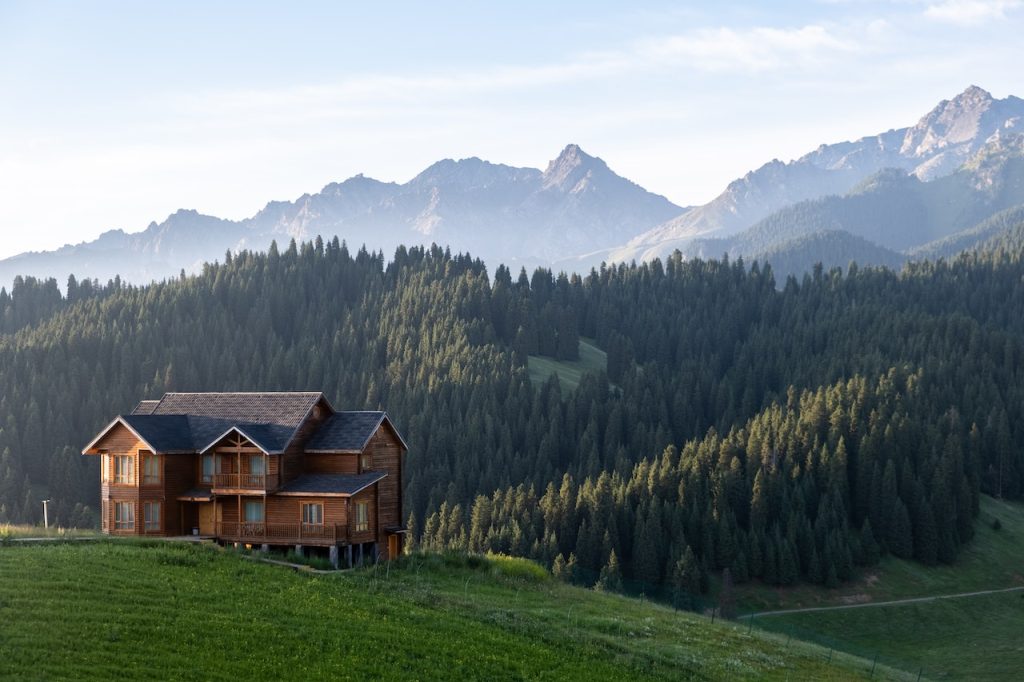# The Rise of Urban Farming: Growing Sustainability in City Spaces
There I was, nestled between two towering concrete buildings, with nothing but the sounds of honking horns and bustling foot traffic around me. I’d just finished planting my first batch of herbs in my tiny rooftop garden, a mere collection of containers where fresh mint, basil, and rosemary would soon flourish. As the sun glinted off the skyscrapers, I felt a profound sense of satisfaction. This small act of gardening in the heart of the city epitomized a burgeoning movement: urban farming. Today, urban farming is more than just a trend; it’s a statement—an assertion that sustainability can thrive even in the most unexpected of places.
## Urban Farming: A New Frontier in Sustainability
Urban farming is at the intersection of agriculture, community, and sustainability, redefining how we view food production. Gone are the days when farming was strictly relegated to distant rural areas. Today, cities worldwide are embracing the benefits of cultivating gardens, even in the smallest of spaces—balconies, rooftops, and community lots are all becoming fertile grounds for plant life.
The concept has exploded beyond growing vegetables and herbs. From aquaponics to vertical gardens, innovative approaches are making urban farming accessible to everyone. The initiative is motivated by a collective desire to connect with nature, eat healthier, and reduce our carbon footprints.
### Food Security: Growing Resilience
One of the most pressing issues contributing to the rise of urban farming is food security. With the global population expected to reach nearly 10 billion by 2050, the demand for food will undoubtedly increase. Traditional supply chains face challenges—transportation delays, rising costs, and even climate change hinder access to fresh produce. Urban farming brings the solution closer to home, ensuring that communities can become self-sufficient, resilient, and agile in times of crisis.
By growing food locally, urban farms reduce the distance traveled from farm to table, therefore slashing transportation emissions and providing fresher produce. This newfound accessibility often means that people can start to address food deserts in urban areas—regions with limited access to fresh, affordable food.
## Community Engagement: Building Connections
Urban farming is as much about community as it is about agriculture. These green spaces foster community bonds and create opportunities for neighbors to engage with one another. Community gardens offer a collaborative space where people can learn about gardening, share meals, and even host workshops. In these vibrant neighborhoods, you’ll find that not only are crops growing, but relationships flourish too.
Community-supported agriculture (CSA) programs allow urban farmers to collaborate with households to share resources and produce. This ensures more families can access high-quality, organic food while supporting local economies. Families often come together to help maintain gardens, enhancing a sense of belonging and responsibility toward the environment.
### Practical Urban Farming Solutions
Urban farms come in all shapes and sizes, which makes them adaptable to any city landscape. Here are a few solutions that are revolutionizing how we farm in urban settings:
1. **Container Gardening**: Perfect for those with limited space, container gardening allows you to grow herbs, vegetables, and even small fruit trees on balconies or patios. All you need are pots, soil, and seeds!
2. **Vertical Gardens**: Also known as green walls, vertical gardens maximize space and can be installed on balconies, fences, or even walls of buildings. These gardens require less maintenance and can produce a high yield in small areas.
3. **Hydroponics and Aquaponics**: These soilless growing methods utilize nutrient-rich water to feed plants. Aquaponics additionally integrates fish farming, creating a self-sustaining ecosystem where plants and fish support each other’s growth.
4. **Community Gardens**: Transform vacant lots or unused city spaces into thriving gardens that the community can tend to together.
### Pro Tips for Urban Farming Beginners
1. **Start Small**: Don’t overwhelm yourself! Start with a few simple herbs in pots, and expand as you gain confidence.
2. **Choose the Right Plants**: Opt for plants that thrive in your specific climate and available space. Herbs, lettuce, and tomatoes are usually beginner-friendly.
3. **Connect with Local Resources**: Join urban farming groups or online forums to learn from experienced gardeners. Your local extension office can also provide valuable insights.
4. **Incorporate Composting**: Help reduce waste while enriching your garden soil. Even small-scale composting can make a huge difference.
5. **Be Patient and Observe**: Gardening takes time. Pay close attention to your plants; their growth can teach you about local environmental factors like light conditions and soil quality.
### The Environmental Benefits of Urban Farming
Urban farms aren’t just empowering communities; they’re also working to heal the planet. These gardens play a critical role in biodiversity by introducing native plants and animals back into city landscapes. They also help mitigate urban heat island effects—a phenomenon where cities are significantly warmer than surrounding areas due to human activities.
Additionally, green spaces capture rainwater, reducing runoff and aiding in stormwater management. As urban areas face increasing levels of pollution, integrating plants into the city fabric helps improve air quality by filtering out toxins and generating oxygen.
Urban farming effectively minimizes food waste. With a remarkable ability to compost and re-use kitchen scraps, urban farms can make a significant impact on the amount of waste sent to landfills.
### The Future of Urban Farming
The future of urban farming is as bright as the sun shining down on a flourishing rooftop garden. Cities like Detroit, New York, and London are leading the charge in making urban farming an integral part of their urban planning. This movement encourages city planners and local governments to rethink policies, provide support, and allocate resources for such initiatives.
Innovative technologies are paving the way for even greater solutions. Vertical farms are becoming more prevalent, employing cutting-edge LED lighting and climate control systems that maximize production. Apps like “Farmers Market” make it easier for urban farmers to sell their goods directly to consumers, building strong connections and creating localized food systems.
### Conclusion
Urban farming is not just a trend; it’s a rallying cry for sustainability and resilience, a vibrant testament to human ingenuity. As city dwellers cultivate green spaces, they are forging a more sustainable future—not just for themselves, but for generations to come. Whether it’s a container on a balcony or a sprawling community garden, each act of planting brings hope, connection, and vitality to our urban landscapes.
So why not get your hands in the dirt? Join the movement and contribute to the rise of urban farming, transforming your city into a greener, more sustainable place. The sky is the limit—literally!



